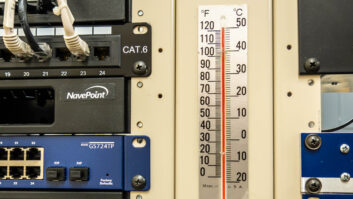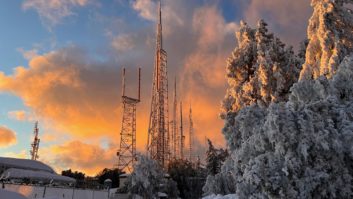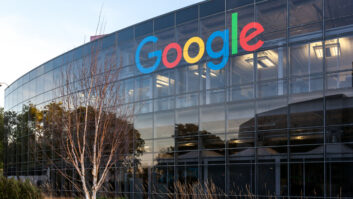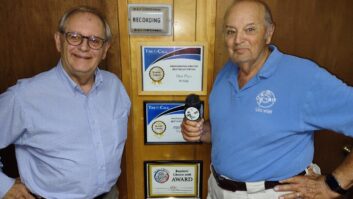In a recent issue of Radio World we described the recent development of a “new breed” of Channel 6 “Franken FM” TV/radio operations. Several members of the ATSC 3.0 television standards group voiced their opinions as to the validity and usefulness of these hybrid facilities that began popping up last year.
This time, we look at the engineering side of this “May/December” broadcasting marriage, one that weds an ATSC 3.0 digital television signal with an analog FM audio transmission. The first station to try out the technology was Venture Technologies’ San Jose, Calif. Station, KBKF-LD, which began airing “second-gen” Franken signals last spring via an FCC Special Temporary Authority (STA) arrangement.
This initial hybrid configuration was the creation of two RF technology companies, SYES (System Engineering Solutions) and Com-Tech.
“We worked together on this low VHF TV/FM combiner, beginning back in the late spring of 2020,” said SYES Vice President of Sales for the Americas Alessandro Annoni. “We designed a low-V transmitter working with a specific modulation/bandwidth and distortion, and a hybrid filter to avoid any type of interference or intermodulation. The amazing tech team of Venture Technologies, Daniel Bisset and Will Brownlie, helped us to get this new system working in San Jose, back in February 2021.”
Jampro Antennas has also been working with LPTV Ch. 6 licensees to move to this new digital/analog broadcasting platform. President Alex Perchevitch said that while some amount of engineering effort was necessary to get the technology to the point where it could serve as a “proof of concept,” his company already had assisted analog Ch. 6 stations in delivering “standalone” FM radio services on 87.75 MHz.
“We were approached by a well-known consulting group on how to combine the FM audio with the Ch. 6, and used modified diplexers similar to those we have produced since the 1960s for analog TV stations of various power levels,” he said.
Jampro’s recent grafting of 3.0 DTV with analog FM required the use of a modified Jampro VHF mask filter and some reworking the FM side of the operation to achieve a happy marriage. However, his company had a lot of experience working with installations involving the combining of multiple FM signals into a common antenna.
“This was not a new endeavor for us or one that required development of a new product group,” said Perchevitch. “We often supply FM combiners for frequency spacings as close as 400 kHz and this experience and product group provided the [expertise] and product to use for this hybrid TV/FM application.”
Even so, the initial assembly of a hybrid 3.0 DTV/analog FM Ch. 6 station did not exactly follow a “plug and play” script.
“We spent several months re-developing the filter technology to meet the requirements,” said Perchevitch. “Certainly, anytime you are trying to combine frequencies which are so closely spaced and achieve high isolation with low insertion loss, it is a challenge.”
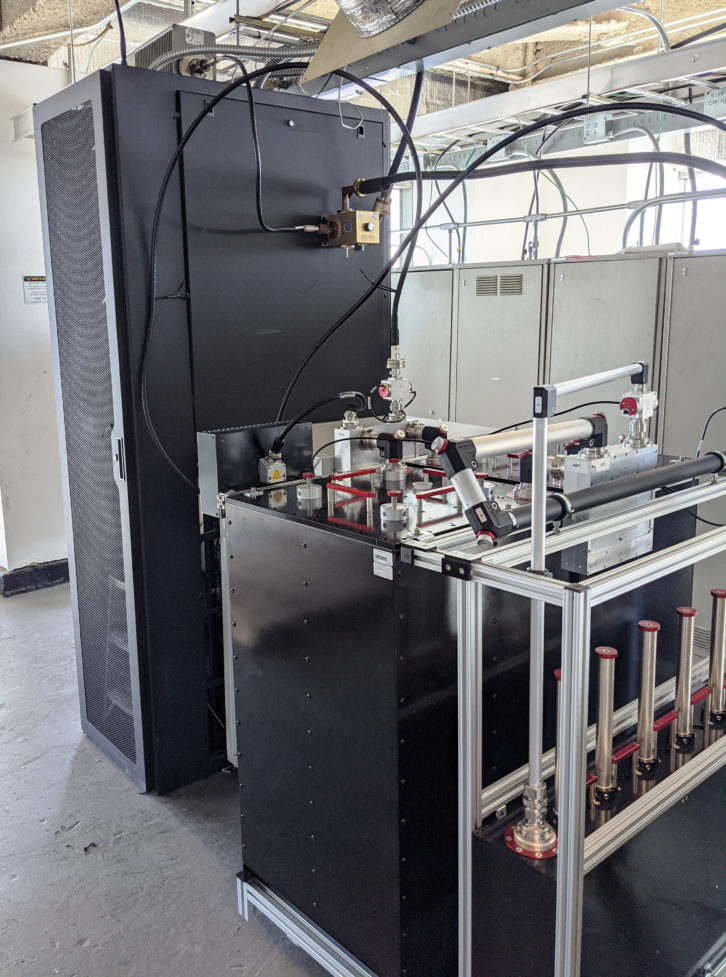
Franken FMs and ATSC 1.0?
Inasmuch as the technology for combining closely spaced dissimilar RF signals has been available for some time now, one might naturally ask why such hybrid DTV/analog FM operations were not attempted by Ch. 6 licensees much sooner — perhaps coincident with the start of ATSC 1.0 broadcasting.
Actually, at least one full-power Ch. 6 station experimented with such a mixed transmission mode, but the results were less than satisfactory, and the FCC refused to sanction it.
As explained by the Sinclair Broadcasting Group’s Senior Vice President of Advanced Technology Mark Aitken, the reason for the failure of 1.0/FM pairing is simple.
“ATSC 1.0 really precluded bifurcating spectrum occupancy,” he said. “As soon as you tried to shorten the bandwidth of the1.0 signal, you broke it; 3.0 is a different story.”
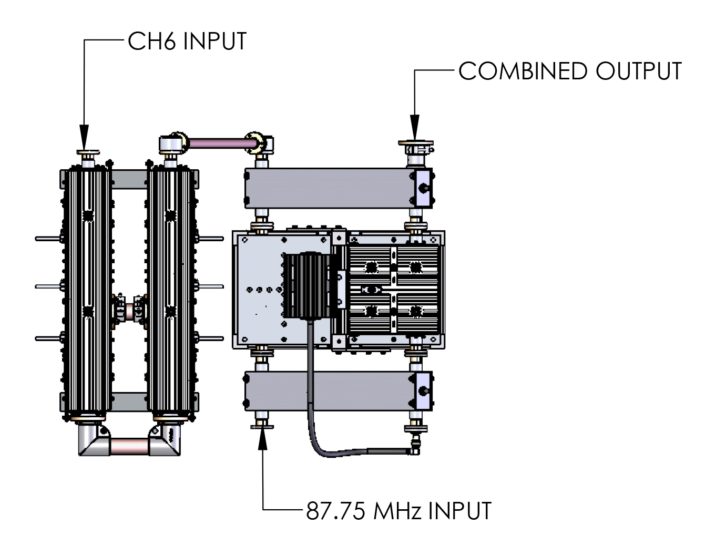
Beginning of a Tsunami?
Could the apparent success of KBKF(LD) and the other “second-gen” Frankens now on the air lead to the adoption of this hybrid mode of broadcasting by full power Ch. 6 operations?
Perchevitch was asked if he saw any barriers that would preclude these Ch. 6 stations from airing dual-audience broadcasts.
“It’s certainly possible,” he said. “And we believe it’s very possible that there will be more hybrid Channel 6 stations in the future.”
Perchevitch views this new breed of hybrid stations with optimism, as they squeeze additional utility of their 6-MHz chunks of spectrum, and added that he was not at all surprised at their rapid emergence.
“Lower-power broadcasters and the consultants serving that industry have always been very creative in seeking ways to be competitive and generate revenue,” he said.
“The use of CPOL (circular polarization) and EPOL (elliptical polarization) by LPTVs is a great example. Long before large numbers of full-power stations broadcast signals with EPOL or CPOL, LPTVs often were operating with elliptical or circular polarization. Franken FMs are all about addressing radios and the revenue from radio listeners, something [mainstream] TV to date has not been able to capitalize on.”
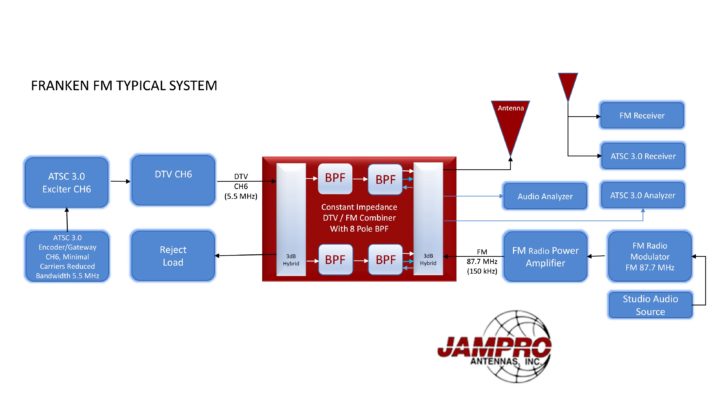
Targeting older receivers
Bill Harland, vice president of marketing at Electronics Research Inc. (ERI), was not particularly surprised with the launching of what might be the vanguard of a common broadcasting practice.
“There are a number of Channel 6 LPTV stations in the U.S. that have been operating in major markets as FM stations for many years,” said Harland. “These are established facilities with significant listenership and the FCC rules do not specifically prohibit offering these ancillary services.”
Keith Pelletier, vice president and general manager of Dielectric, did raise an eyebrow at the sudden arrival of “second-gen” Frankens.
“It certainly caught me off guard. The business model seems to be targeted for older vehicle receivers. In the future, as the older receivers get replaced it will be important to have a receiver that will go below 88 MHz, and not just vehicle receivers. Also, it will be an all-digital world at some point I would think, so analog services even in the FM world may go away.”
Nonetheless, Dielectric is ready to supply Ch. 6 TV stations with the technology needed to add analog FM if they desire to do so.
“Our sales team has been approached by multiple license holders,” said Pelletier. “We have manufactured two antennas to date and have discussed multiple more deployments that should happen in 2022.”
He added that while the antenna portion of such a 3.0/FM installation wasn’t especially challenging, the combiner was a somewhat different story.
“In contrast to the antenna, the combiner needed more simulation work as well as development in the lab,” he said. “This work was done using circuit simulation tools, HFSS (3D electromagnetic simulation software), and finally a prototype was manufactured to prove out the system.”
ERI’s Harland also said such combining of dissimilar signals was not especially challenging.
“ERI manufactures filters and diplexers that could be adapted for this application and we would design and manufacture the components required for a transmitter supplier to build systems for this application.”
At this point, the technology is in place, as are operators and their audiences, so it appears that only time will tell as to whether these Ch. 6 hybrid DTV/FM stations will proliferate, and whether the FCC will sanction their operations beyond STAs by with steps to codify their existence and operating practices.
The author is a longtime Radio World contributor and former technology editor of TV Tech.
Read about a hybrid DTV/FM6 station in New York: “WNYZ(LD) Becomes NYC’s First ATSC 3.0 Broadcaster”

